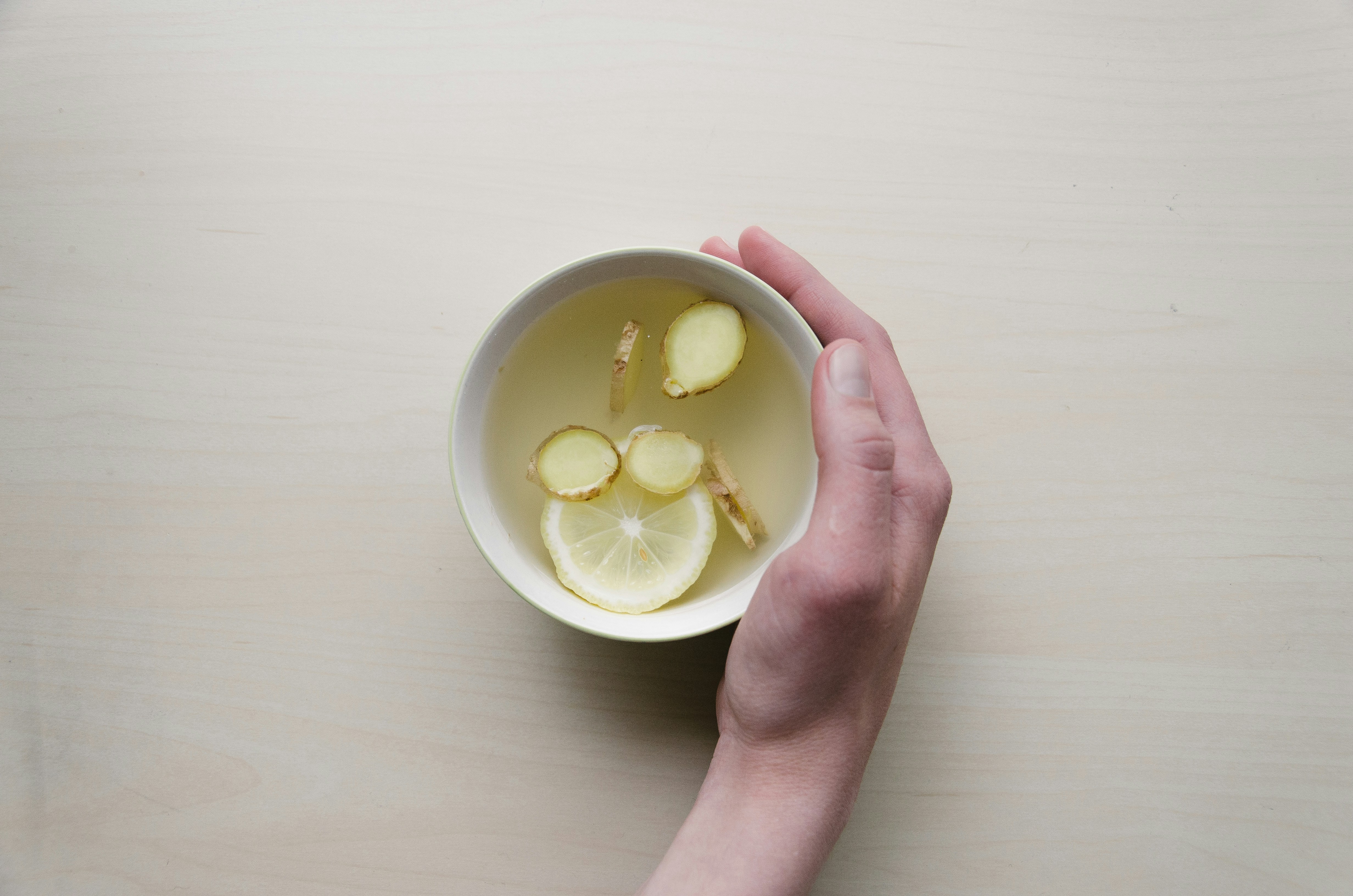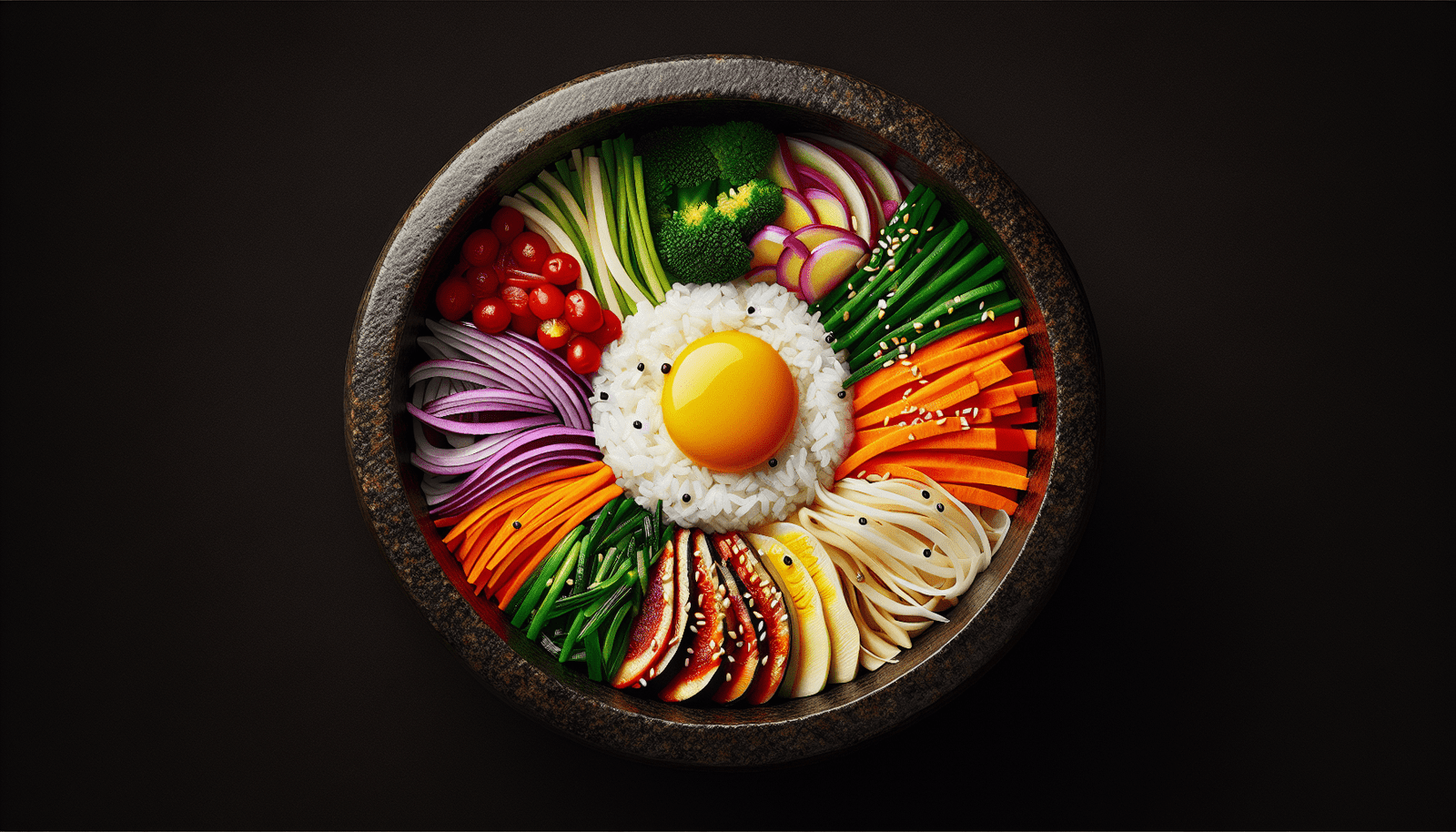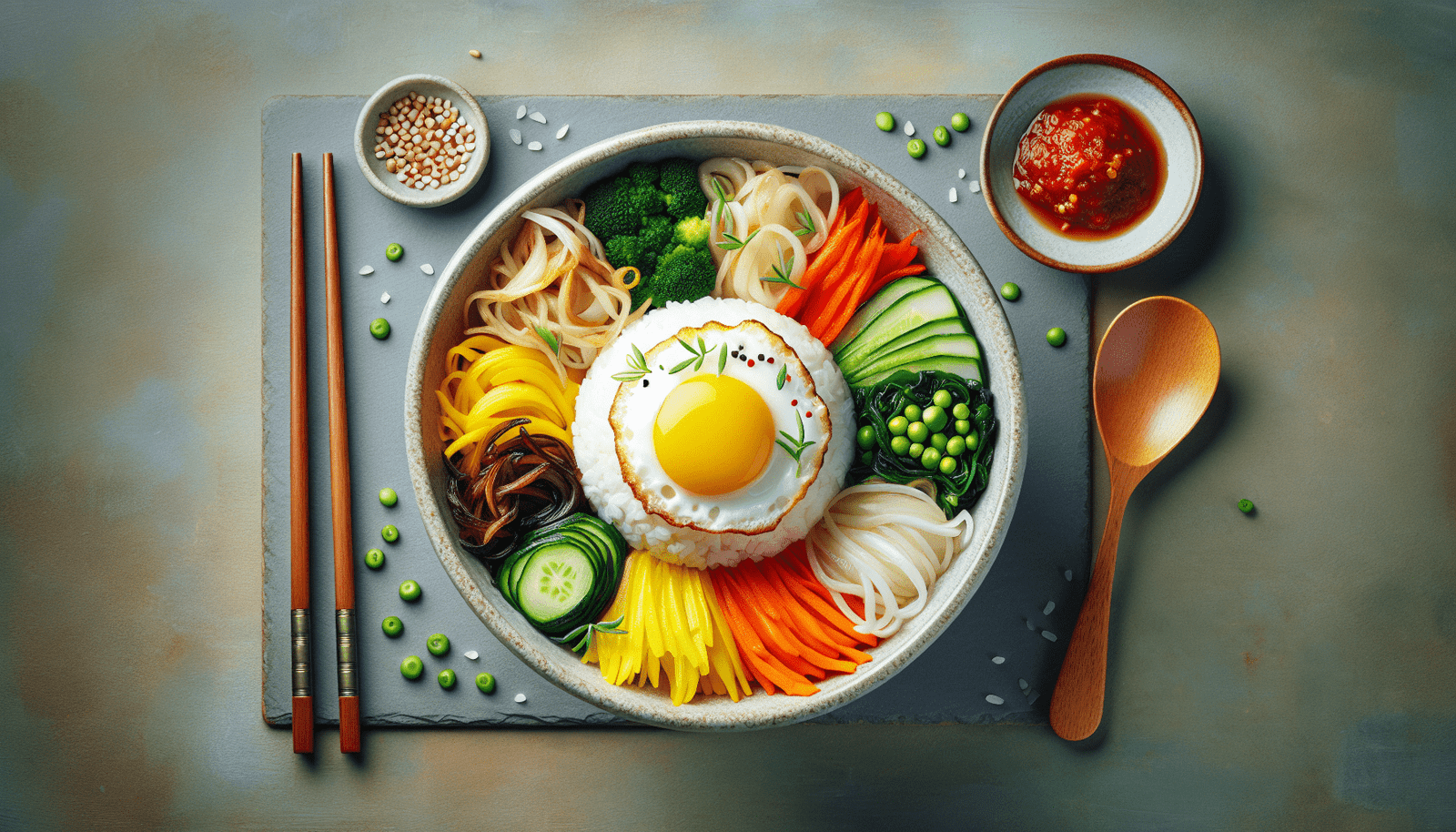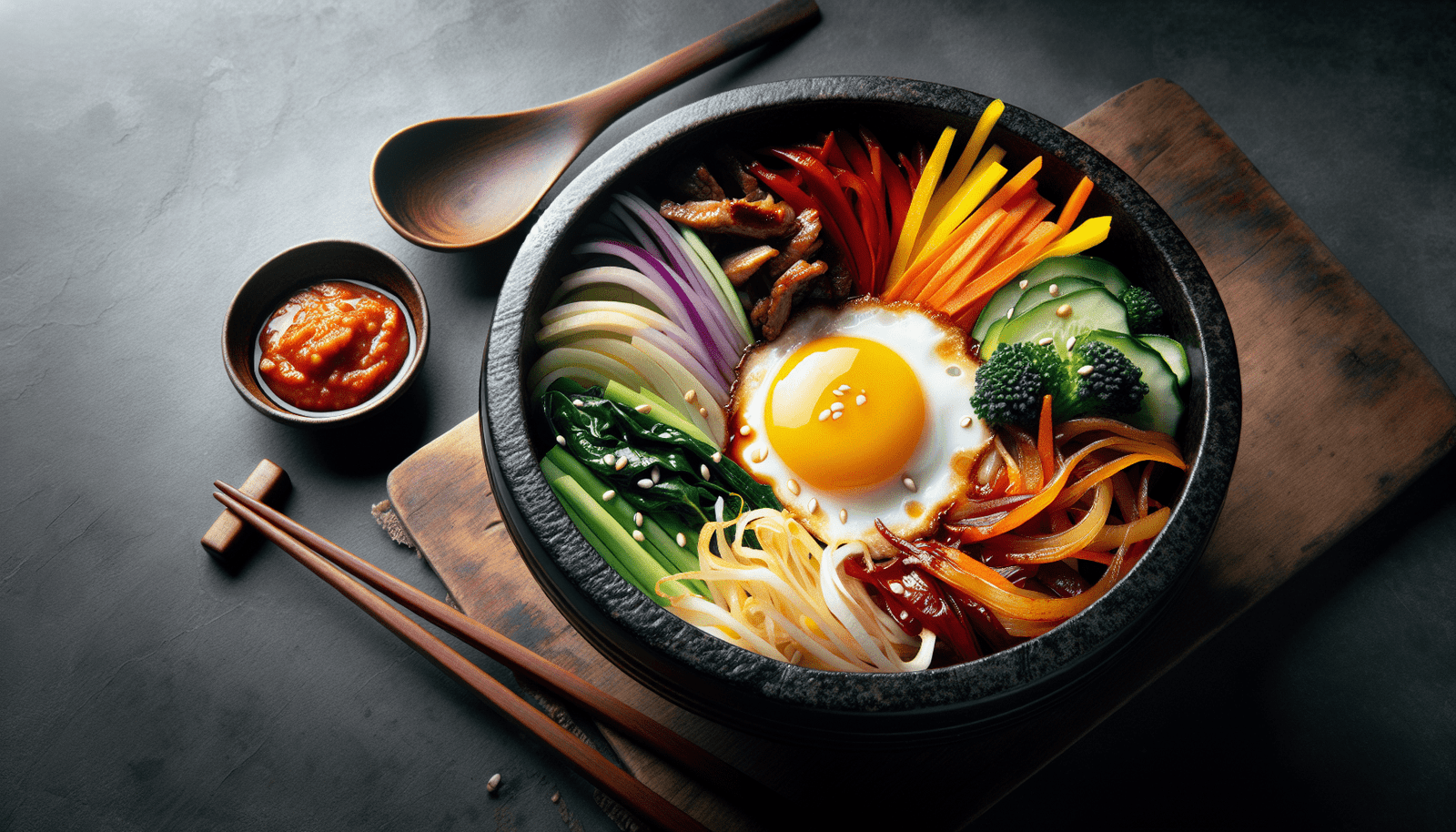Imagine sitting down at a Korean restaurant and being faced with a vibrant and colorful dish, full of various ingredients arranged neatly in a bowl. This is bibimbap, a popular Korean dish known for its unique blend of flavors and textures. From the sizzling stone bowl that gives the rice a delightful crispy bottom, to the assortment of fresh and pickled vegetables, and the perfectly cooked meat or tofu, a classic bibimbap dish is a harmonious symphony of tastes that will leave you craving for more.
Ingredients
Bibimbap is a versatile dish that can be customized based on personal preferences and dietary restrictions. The key ingredients for a classic bibimbap dish include rice, meat (usually beef), vegetables, eggs, and gochujang (chili paste). These ingredients come together to create a harmonious blend of flavors and textures that make bibimbap a popular choice among both Koreans and international visitors.
Rice
Rice is the base and foundation of bibimbap. Traditionally, short-grain white rice is used, although some variations may incorporate brown or mixed grains for added nutritional value. The rice is cooked to perfection, with a slightly sticky texture that helps bind all the other ingredients together.
Meat
Beef is the most common protein choice for bibimbap. It is typically thinly sliced and marinated to infuse it with flavor. The marinade usually consists of soy sauce, garlic, sesame oil, and other seasonings, which tenderize the meat and add depth to its taste. However, other meat options, such as chicken or pork, can be substituted to suit individual preferences or dietary needs.
Vegetables
An assortment of fresh, colorful vegetables is a hallmark of bibimbap. Some commonly used vegetables include carrots, spinach, bean sprouts, zucchini, mushrooms, and cucumbers. These vegetables are either blanched or sautéed to retain their natural crunchiness while ensuring they are still tender and easy to eat.
Eggs
Fried eggs are a classic topping for bibimbap. The eggs are usually cooked until the yolk is still slightly runny, providing a rich and creamy element to the dish. The egg yolk acts as a sauce that coats the rice and adds another layer of flavor and texture.
Gochujang (Chili Paste)
Gochujang, a fermented chili paste, is what gives bibimbap its signature spicy kick. It is made from red chili pepper, glutinous rice, fermented soybeans, and salt. Gochujang is mixed with other seasonings like sesame oil and garlic to create a delicious, sweet, and savory sauce that ties all the ingredients together.
Preparation
To create a satisfying and authentic bibimbap dish, proper preparation of each component is crucial.
Cooking Rice
Cook the rice according to package instructions, ensuring that it is fluffy and not overly sticky. The rice should be cooled slightly before assembling the dish to prevent it from becoming mushy.
Marinating the Meat
Thinly slice the beef and marinate it with soy sauce, garlic, sesame oil, and any additional desired seasonings. Allow the meat to marinate for at least 30 minutes so that the flavors penetrate the slices.
Preparing the Vegetables
Prepare the vegetables by washing and cutting them into thin, uniform slices. Blanch or sauté the tougher vegetables like carrots and spinach to soften them slightly. Bean sprouts and cucumber can be left raw to provide a crisp and refreshing element to the dish. Keep each vegetable separate to maintain their individual flavors and colors.
Frying the Eggs
Heat a non-stick pan and fry the eggs individually until the egg whites are set and the yolks are still slightly runny. This ensures that the eggs provide a velvety texture when mixed with the other ingredients.
Assembly
The assembly of bibimbap is not just about combining the individual components but also about creating an appealing visual presentation.
Arranging Ingredients in a Bowl
Take a large bowl and start by placing a portion of cooked rice at the bottom. Arrange the marinated beef and prepared vegetables in small sections around the rice. This arrangement allows each ingredient to be showcased while making it easier to mix them together later.
Placing the Fried Egg on Top
Gently slide a fried egg on top of the arranged ingredients. The golden yolk and white egg provide a vibrant and visually striking element to the dish.
Drizzling Gochujang over the Dish
Finish the assembly by drizzling a generous amount of gochujang over the bowl. The gochujang adds a spicy and savory flavor to the dish, enhancing the overall taste profile.
Mixing
Once the bibimbap is assembled, it is time to mix all the ingredients together. This step is essential to ensure that every bite is a harmonious blend of flavors.
Stirring the Ingredients Together
Using a spoon or chopsticks, gently stir the ingredients in the bowl, making sure the gochujang is evenly distributed throughout. The mixing process allows the flavors to meld together and creates a symphony of flavors with each bite.
Incorporating the Gochujang Evenly
The gochujang should be thoroughly mixed with the other ingredients, coating the rice, meat, vegetables, and egg with its spicy goodness. This step ensures that every mouthful is infused with the distinctive flavor of gochujang.

Serving
To enhance the taste and presentation of bibimbap, certain garnishes and accompaniments can be added.
Garnishing with Sesame Seeds
Sprinkle toasted sesame seeds over the mixed bibimbap to add a nutty aroma and crunchy texture. The sesame seeds also contribute to the visual appeal of the dish.
Adding a Dollop of Sesame Oil
For extra richness and flavor, add a drizzle of sesame oil to the mixed bibimbap. The fragrant sesame oil provides a delightful aroma and deepens the umami taste.
Serving with Kimchi and/or Pickled Vegetables
Bibimbap is often enjoyed with traditional Korean side dishes. Kimchi, a spicy fermented cabbage, is a popular choice to accompany bibimbap. The tangy and spicy flavors of kimchi complement the savory and rich taste of the dish. Pickled vegetables, such as radishes or cucumbers, also add a refreshing and crunchy element to the meal.
Flavor Profile
The flavor profile of bibimbap is a harmonious balance of various tastes and textures.
Balance of Flavors
Bibimbap offers a perfect balance of sweet, savory, spicy, and umami flavors. The combination of gochujang, marinated meat, and various vegetables creates a complex taste experience that satisfies the palate.
Umami-rich
The umami taste, often described as “the fifth taste,” is prominent in bibimbap. The combination of the marinated meat, gochujang, and sesame oil creates a deep and savory flavor that stimulates the taste buds.
Spicy and Savory
The chili paste, gochujang, adds a spicy kick to bibimbap. The heat from the gochujang is well-balanced with the other ingredients, creating a delicious and satisfying bite.
Textural Variety
Bibimbap offers a delightful combination of textures. The soft rice, tender marinated meat, crisp vegetables, and creamy fried egg create a symphony of textures in each spoonful.

Regional Variations
While bibimbap is a staple in Korean cuisine, different regions in Korea have their own variations of this beloved dish.
Jeonju Bibimbap
Jeonju, a city in South Korea, is famous for its version of bibimbap. It features an abundance of fresh and colorful vegetables, including various root vegetables like gosari (bracken fern), bellflower root, and doraji (balloon flower). Jeonju bibimbap often includes a special sauce made with soybean paste, called ssal-ddeum, which adds a unique and earthy flavor.
Dolsot Bibimbap
Dolsot bibimbap is a variation of bibimbap that is served in a hot stone bowl called a dolsot. The dolsot is heated before the rice and other ingredients are added, resulting in a crispy layer of rice at the bottom of the bowl. Dolsot bibimbap is known for its sizzling presentation and the added smoky taste that comes from the rice crisping up against the hot stone.
Yangpun Bibimbap
Yangpun bibimbap is a specialty of the Yangpun region in South Korea. It features a wide variety of wild mountain vegetables, including bracken fern, bellflower root, and edible greens. Yangpun bibimbap celebrates the unique flavors and textures of these mountain vegetables, providing a taste of Korea’s natural bounty.
Cultural Significance
Bibimbap holds a special place in Korean culture and is considered a representative dish of Korean cuisine.
Traditional Korean Dish
Bibimbap has a long history in Korea, dating back to the late Joseon Dynasty. It was traditionally eaten on the eve of the lunar new year as a way to use up leftover ingredients and bring harmony to the household. Over time, bibimbap has become a staple dish enjoyed on various occasions and is deeply ingrained in Korean food culture.
Representative of Korean Cuisine
Bibimbap is often used as a symbol to represent Korean cuisine as a whole. Its colorful and visually appealing presentation showcases the emphasis on fresh ingredients and the harmony between different flavors and textures. Whether it is served in a restaurant or made at home, bibimbap embodies the essence of Korean culinary traditions.
Symbolic Meaning of Harmony and Unity
The act of mixing all the ingredients together in bibimbap symbolizes unity and harmony. Just as the ingredients come together to create a delicious dish, bibimbap represents the desire for a harmonious and united society. It is a reflection of Korean cultural values that emphasize cooperation and balance.

Health Benefits
In addition to its delicious taste, bibimbap offers several health benefits due to its nutrient-rich ingredients.
Nutrient-Dense
Bibimbap is a nutrient-dense dish that provides a wide range of essential vitamins and minerals. The combination of vegetables, meat, eggs, and rice ensures that you get a good balance of macronutrients and micronutrients in each serving.
Low in Fat
Bibimbap can be a healthy choice for those conscious of their fat intake. Lean cuts of beef, minimal oil used in cooking, and the option to customize the dish according to personal preferences make it easy to control the amount of fat in bibimbap.
High in Fiber
The abundance of vegetables in bibimbap contributes to its high fiber content. Fiber aids in digestion, promotes satiety, and helps regulate blood sugar levels. Choosing whole grain rice or mixed grains can further increase the fiber content of the dish.
Loaded with Vitamins and Minerals
The colorful assortment of vegetables in bibimbap provides a wide array of vitamins and minerals. Carrots are rich in vitamin A, spinach is packed with iron and calcium, and bean sprouts are a good source of vitamin C. The combination of these nutritious ingredients ensures that bibimbap is a wholesome and well-rounded meal.
Popular Tourist Dish
Bibimbap is not only beloved by Koreans but has also gained popularity among international visitors to South Korea.
Frequently Ordered by International Visitors
Bibimbap’s appeal lies in its satisfying combination of flavors and textures, making it a dish that appeals to a wide range of palates. When visiting Korean restaurants or street food stalls, tourists often seek out bibimbap as a safe and delicious option.
Promoted by Korean Tourism Boards
Korean tourism boards actively promote bibimbap as a must-try dish for visitors to South Korea. It is often included in travel guides and marketing materials, highlighting its cultural significance and gastronomic appeal.
Featured in Korean Dramas and Movies
Korean dramas and movies have played a significant role in promoting Korean cuisine, including bibimbap, to a global audience. The visually appealing scenes of characters enjoying a bowl of bibimbap have sparked curiosity and intrigue, driving more people to experience this iconic dish for themselves.
In conclusion, a classic bibimbap dish is a flavorful and vibrant blend of rice, marinated meat, vegetables, eggs, and gochujang. With its balanced flavors, umami-rich profile, and textural variety, bibimbap is a dish that embodies the beauty of Korean cuisine. Whether enjoyed as a traditional dish, a regional variation, or a popular tourist choice, bibimbap represents the harmony and unity that the Korean culture values. With its health benefits, nutrient-dense ingredients, and popularity among both locals and international visitors, bibimbap truly stands out as a culinary treasure of Korea.


